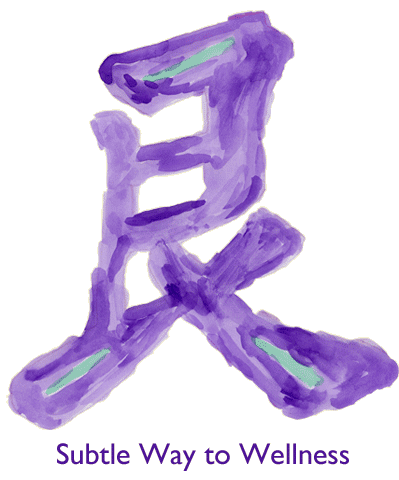![]()
Acupuncture and Chinese Herbology comprise a system of healthcare which originated in China more than 3000 years ago. It is a comprehensive system for the diagnosis and treatment of acute and chronic health disorders. An art and science based upon natural law, its philosophy is to heal naturally, safely, gently, and without side effects.Central to the philosophy of Chinese Medicine is the premise of the self healing mechanism active in the body. The goal of Chinese Medicine is to promote this mechanism from within. With this in mind, one can observe the body as a self healing dynamic whole, a network of interacting light, information, and robust energy. This unimpeded energy flow maintains health, while any stagnation leads to disease.
The realignment of the energy field is based upon the concept of Qi, the underlying energy of life. It flows through the body to regenerate and nourish. It is generated by the internal organs and flows along paths called meridians. Along the meridians are points where the Qi can be affected by acupuncture needles or finger pressure. In this way the Qi is invigorated and its function of nourishing, transforming, and protecting is enhanced. The points are like gates adjusting the flow of energy. Blockages in the points will result in pain or tension. When using needles or finger pressure on a point, the point will open, and the blockage will be removed. Since the internal organs generate the points, the points will also communicate with the organ function so the healing manifests on a deep level.
The treatment strategy employed by a practitioner of Chinese Medicine is based upon a traditional diagnosis. This art and science is based upon centuries of observation, research, and clinical data. There are many techniques used. These are the main techniques:
- Observation – The acupuncturist will observe any outward signs, especially along the acupuncture meridians.
- Asking – The acupuncturist will do a thorough intake including health history, and subjective complaints.
- Meridian diagnosis – Feeling for obstruction, blockages, heat, cold, tension along the acupuncture meridians.
- Pulse diagnosis – The palpating of the pulse is the most thorough, all encompassing technique. Along the radial artery there are locations which correspond to different organs. The acupuncturist will feel these locations and record the quality. There are 28 classical qualities. For example, a wiry quality in the liver position will indicate energy stagnation in the Liver.
- Tongue diagnosis – The tongue is a map of the entire body. By observing the tongue body the acupuncturist can discern the location of the imbalance. For example, the tip of the tongue represents the heart, and the sides of the tongue represent the liver.The Acupuncturist will note the location of any discolorations, abnormal swellings etc. A healthy tongue body should be pink, not too red or pale. If the tongue body is red in might indicate heat or inflammation. If it is pale, it might indicate energy or blood deficiency.
The acupuncturist will then observe the tongue coating. A healthy tongue coating is thin white and you should be able to see through to the tongue body. The coating indicates the amount of dampness or mucus internally in the body. A thick coating indicates that mucus is abundant. If the damp mucus congeals, it will result in blockages in the acupuncture points and channels.
The data collected from all these techniques, along with the physical, emotional symptoms voiced, the acupuncturist will be able to identify and treat the pattern of disharmony.
The ageless wisdom of Chinese Medicine is keen to observe the relationship between mind –body- spirit. With this premise in mind, it is a wholistic approach and promotes healing on many levels. It surely proves that the wisdom of yesterday, is the promise of tomorrow.
Questions? Please feel free to contact for more information.
